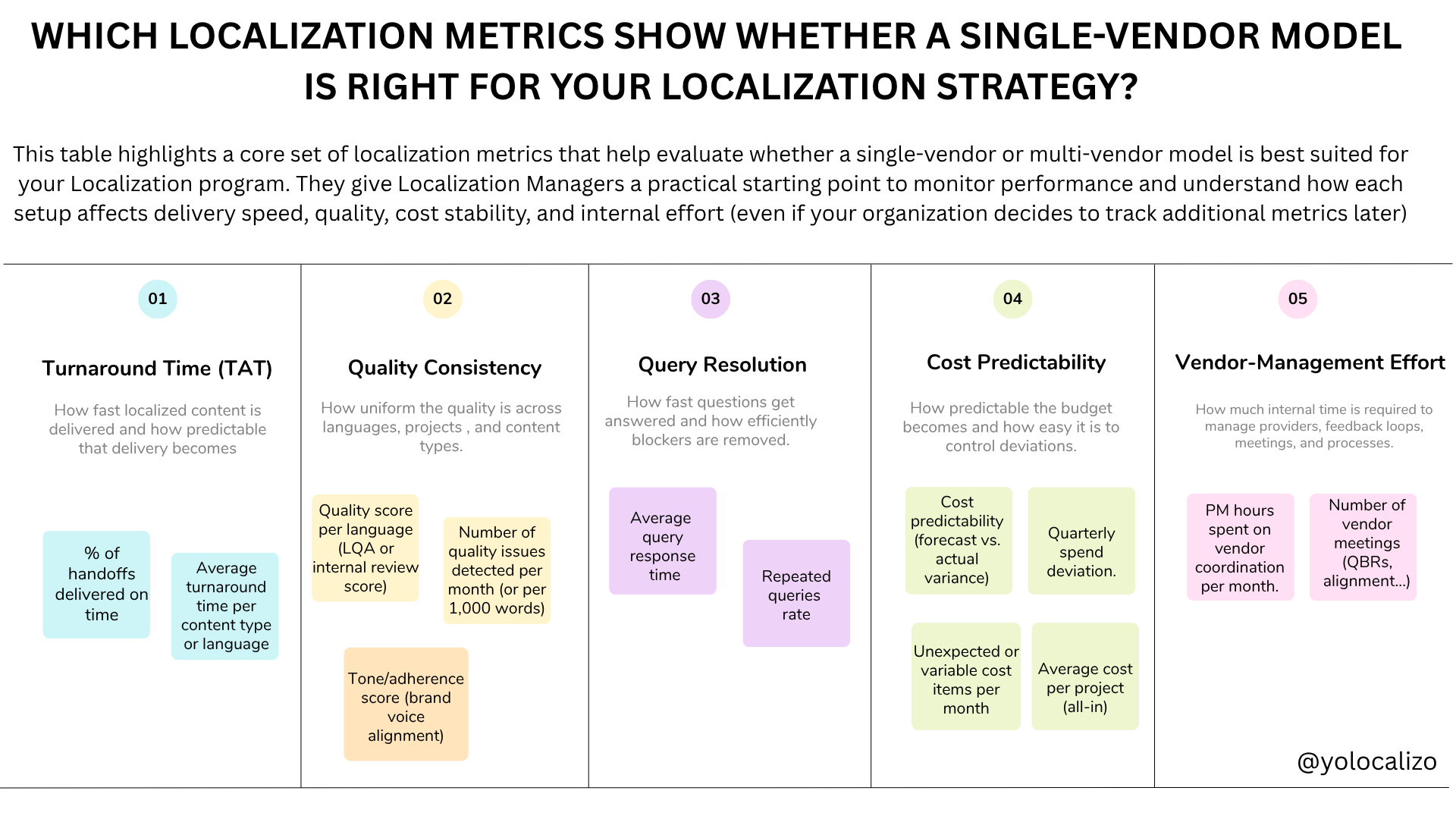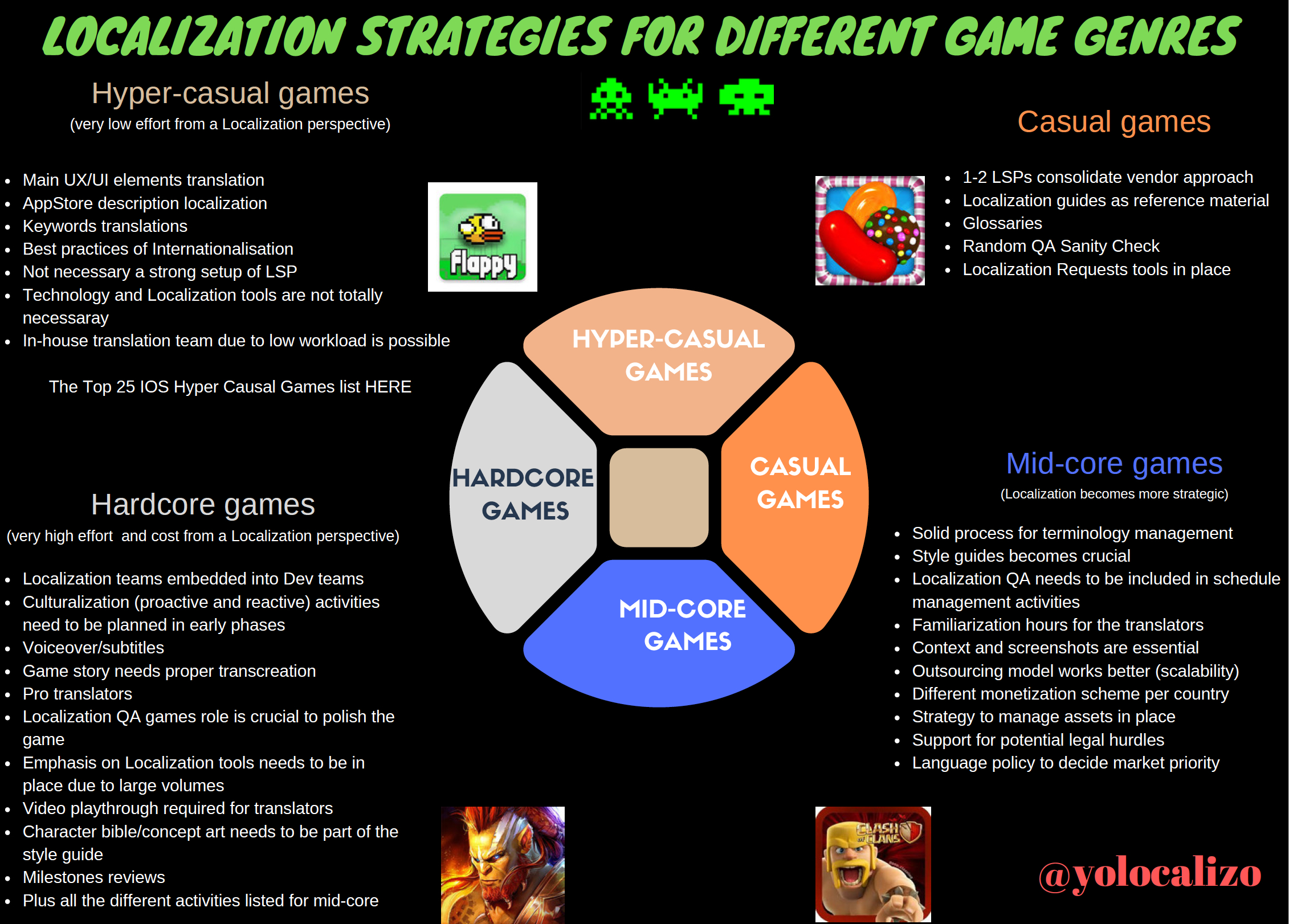One size does not fit all. How to adapt your localization strategy depending on the game genre
Life is good!
There are certain things in this life that when we mix them the result is spectacular. For example, the combination of a day at the beach + snack with delicious Argentinian pastries and a glass of beer is to me a match 3 made in heaven 🤩😎☀🌊
Ok, now in a tone a little bit more serious, there are combinations in our industry that when mixed the result are even more spectacular than a day at the beach enjoying a nice cold beer.
The localization industry does not stop growing.
Localization revenue in the last decade, UP, UP, UP!
Source: Statista. Localization industry is one of the few industries with stable growth
The video game industry does not stop growing
Source: Newzoo. Videogames industry is booming!
Seeing these graphs also does not seem that the trend will change any time soon as it has been growing and growing for years!!
It is not necessary to be a genius to think that if we join both industries we have an incredible opportunity in front of us.
The number of translated video games has gone through the roof in recent years, and, accordingly, there has been a marked increase in the request for translators
So far so good, now everything gets complicated when we go into the details, as the saying goes, "the devil is in the detail"
There are different localization strategies that we can follow to globalize a videogame, there are also hundreds of LSPs specialized in videogames localization and finally, we also have thousands of games that are uploaded every year to the AppStore /PlayStore. For that reason with so much variety and possibilities at our fingertips, and if we are new to the video game industry, or to the Globalization industry, then it can be overwhelming to decide where to start.
That's what my post this week is about, in the following paragraphs and with the help of this infographic, I intend to shed some light on how the localization strategy varies depending on the type of game we are developing.
And no, the idea of " one size fits all " does not work in this case. There are 4 major genres in video games and we must choose the proper localization strategy for each gender, otherwise, we will be working in a way tremendously inefficient .
The four genres we have are:
Hyper-casual games
Casual games
Mid-core
Hard-core games
Let 's look a little more detail the peculiarities of each gender.
Hyper casual games
These are games with simple mechanics that offer instant gameplay. They are based on the foundations of “tap to play.” The combination of simple mechanics with simple UI provides a very accessible and incredibly engaging user experience. These are “no-brain effort” games (remember Flappy Bird ?), They do not require commitment, and game length rounds are incredibly short (30 secs-2 min). The cost model is free to play and the monetization is coming through rewarded video-ads while the revenue might come also through in-game purchase ( to remove the ads in order to improve the player experience)
Source: Quora
Casual games
Click HERE to read an exclusive article in Forbes about this incredible achievement of the 5000 Candy Crush level!
They go one step further, they are still simple but definitely in these ones we need our brains! Especially in the puzzle casual genre. A casual game is a video game that it’s for anybody and everybody. They are fun, with simple gameplay that is easy to understand but difficult to master. Casual games give players the possibility to enjoy a video game without investing significant time to it, playing it spontaneously, irregularly, or infrequently. Casual game design is based on reaching “quick” goals, which do not take much time and effort, but gradually become more difficult for the player to feel his progress and continue to play. These games do not have an ending. They are made in such a way that the player can play them endlessly . For example, we just released level 5000 in Candy Crush! What a journey
Mid-core games
The mid-core games are different from the 2 genres explained above. They are games not for everyone. In this type of games, the learning curve is greater than in casual games. typically more investment ( not only time but also money !) is required to succeed. Players can be punished by failing to play well (you lose trophies or equivalent rewards).
Mid-core gamers are players with more interest in games which play more kind of games. The idea behind mid-core games is to mix together aspects of casual and hardcore games and come up with something appealing to a broader audience.
Clash of Clans from the Finnish developer Supercell has been one of the titles who best combined the best practices (source: Gamasutra ) that we need to implement to create a successful mid-core game
Easy to operate
Ease of Access
Easy to learn, hard to master
Don't punish for early mistakes
Clear objectives and progress
Easy to come back to
Deep engagement
Hardcore games
Hard-core games = complexity. We have here the toughest learning curves, but typically have the most invested users, highest average spenders. They are also the most loyal users and the ones who enjoy the game the most. As Seth Godin would say they are our true Tribe (if you don't know Seth, you might one to give it a try to know one of the brightest minds on the current scene)
The profile of the hardcore gamer is totally different from the casual sphere. These players are well informed on the news, get the latest techs on the market and spend a lot of time playing games and following gaming communities. Hard-core games have complex narratives, graphic art is impressive, music is an experience similar to attend a Hans Zimmer concert. Dialogues have nothing to envy of a super Hollywood production.
I remember years ago when I was working in Montreal as a Ubisoft vendor how impressive I found Assassins Creed II, a game that we were doing Localization QA and in which the narrative part takes place in the time of the Italian Renaissance. I remember I can explore Florence , Venice , Tuscany while I guided Ezio on a quest for vengeance! It seemed to me to QA that game like living a movie!
The concept of hard-core games has been traditionally associated by playing on PC and PlayStation / Xbox, but this is also a paradigm that gradually is changing. Each time mobile phones are more powerful, with more memory, more space, and super-fast processors.
This is motivating video game developers to be taking positions and launching hardcore games for mobile. And in these games, localization plays a fundamental role in reaching hardcore players.
Conclusion
I hope you found this article interesting and I hope you enjoy playing video games wherever you are this summer! , whether hyper-casual or hardcore, the combination of localization and videogames is an excellent combination to have a good time
Want your game to reach a global audience? You can market your game to new international markets by having a proper localization strategy. By adapting to the appropriate culture depending on the game genre. When we do this we are on the perfect path to increase our number of players and revenue. But there are several steps towards successful gaming localization. Contact your internal localization teams or find a localization partner to help your game to become truly global.
Hope the ideas shared in the infographic can serve as a foundation to kick off conversations within your teams about which are the steps/techniques we can take to expand your brand, to expand your international player base
What about you? which are the localization strategies that you take depending on the game genre?
Leave your comments or questions below and let's continue the conversation !! 😉
Have a great week everyone !
@yolocalizo






















This feels like a pivotal moment. Localization teams are being asked to support more markets, move faster, use AI responsibly, and show impact, not just output. Expectations are higher than ever, but many teams are still trained mainly for execution. We are strong at delivering localization work, yet we often struggle to move from output to outcome and to clearly explain the impact of what we do.